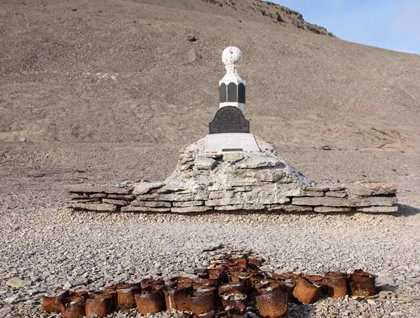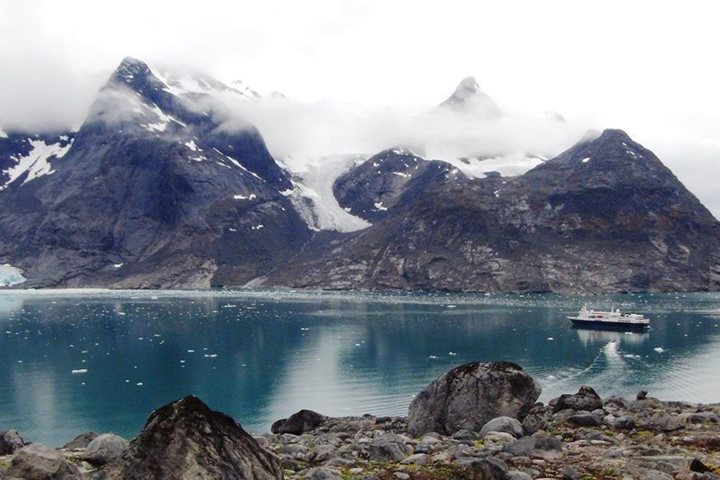For a maritime historian and archaeologist like myself, this morning’s expedition to the barren, windswept beach of Beechey Island at the entrance of Wellington Channel was particularly poignant. For it was here that Sir John Franklin spent the winter of 1845-1846; it was here that he left a cairn pointing out the direction in which he was heading to find the elusive Northwest Passage; and it here that the first three members of his crew died and were buried. We all had the opportunity to visit the graves of Franklin’s crew who had succumbed to pneumonia and lead poisoning from the badly soldered canned foods. The simple headboards of the graves stood like sentinels at right angles to the sea facing west in the direction their fellow shipmates were to sail to their doom.
Further down the beach was the scattered remains of Northumberland House, a temporary shelter built in 1853 to house more than 200 men of Sir Edward Belcher’s Arctic Squadron, one of the many expeditions sent out to scour the Arctic Archipelago for the missing expedition in the decade following Franklin’s disappearance. The gravel terraces above the beach were littered with a jumble of rusted food tins, barrel hoops and broken fragments of barrel staves of the naval stores that sustained the sailors through the long winter months that their ships were besieged by ice in this protected anchorage between Beechey and Devon Islands. As we left the beach a white morph gyrfalcon swooped down and alighted atop one of the many cairns that have been erected on the terrace above the long-abandoned remains of the British naval outpost.
Back aboard we enjoyed hot soup and a resplendent lunch while the National Geographic Explorer repositioned further east along the south coast of Devon Island in preparation for our afternoon hike. The wind had definitely picked up so our landing on the scree beaches of Radstock Bay was definitely “wet” but the crew and staff managed to help us through the surf keeping our camera gear as dry as humanly possible.
Once ashore we split into various hiking and walking groups, which enabled us to explore the tent rings of the Thule summer camp on the lower beach and then visit the larger rock-walled winter dwellings further back in the tundra at our own pace. The Thule families that had occupied this village were definitely whale hunters and they used the ribs of the bowhead whales as rafters to support the roofs of their winter houses and the skulls of the whales to frame their doorways. While a few of the groups went for a longer aerobic hike, many of us were content to explore the bone strewn Thule houses and lush tundra floral with the naturalists and photo instructors. It seemed all too soon that we were invited to return to the ship. As we watched the barren shores of Devon Island retreat in the distance, I think we all had a new respect for the intrepid sailors and marines that signed onto crews who participated in the search for the Northwest Passage across the top of the World!







